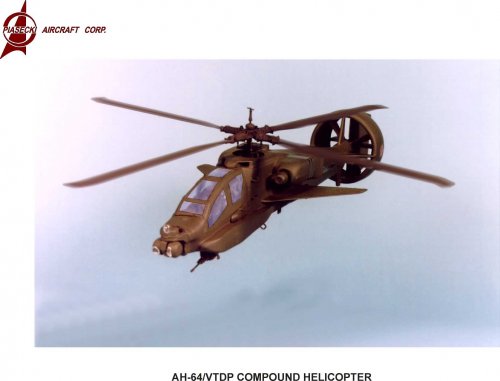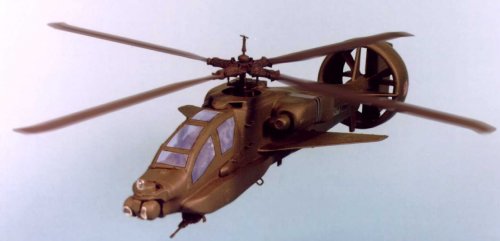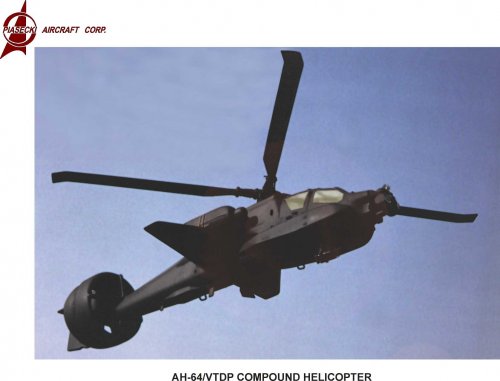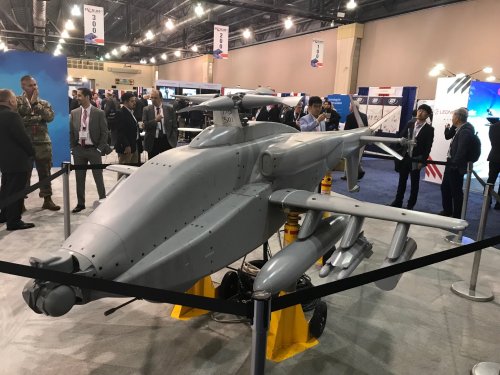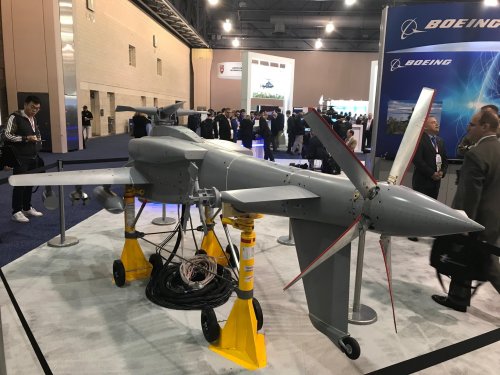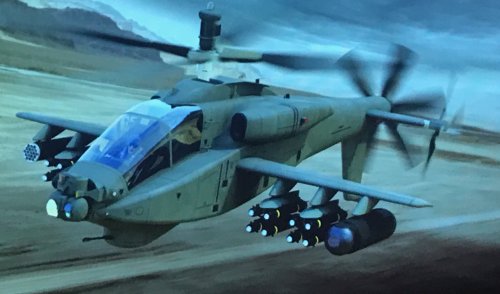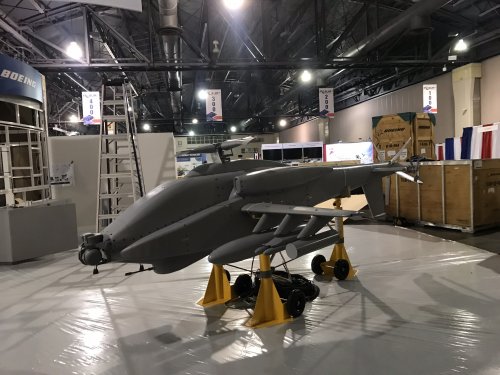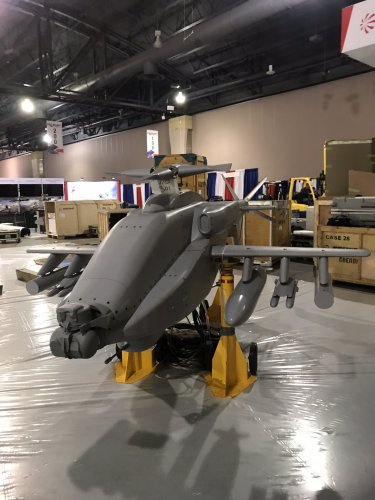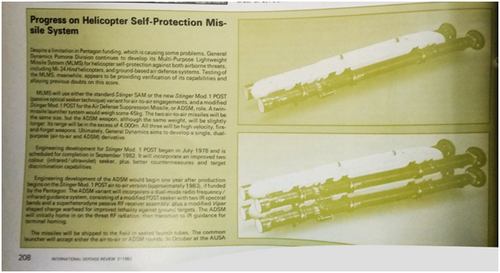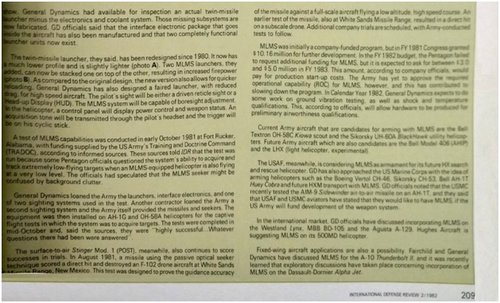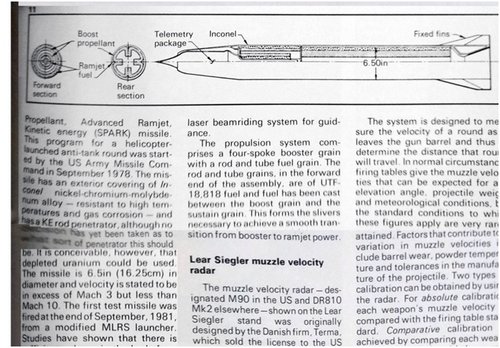AH-64 Apache Projects
- Thread starter overscan (PaulMM)
- Start date
- Joined
- 3 June 2006
- Messages
- 3,094
- Reaction score
- 3,966
Re: Piasecki Apache VTDP
Source: http://www.combatreform.org/TACTICALSTUDIESGROUP/piaseckivtdp.htm
Source: http://www.combatreform.org/TACTICALSTUDIESGROUP/piaseckivtdp.htm
Attachments
- Joined
- 13 June 2007
- Messages
- 2,173
- Reaction score
- 3,095
Propulsor presently installed? Flying hardware or just the wind tunnel model?
Back to the Future! Mark
Back to the Future! Mark
- Joined
- 11 March 2012
- Messages
- 3,251
- Reaction score
- 3,179
......... The 5-point landing gear design is hilarious...i guess that they took seriously the issue of landing on a rolling deck, but it really looks "Kluged" together 
————————————————————————
What is so odd about 5 point undercarriage?
All the Canadian Forces, Sikorsky Sea Kings - that I worked on - had 5 undercarriages, but only 4 were retractable.
They had the usual 3 sets of wheels - supplied by Sikorsky, plus two more legs for the Beartrap haul-down system. Only the tail wheel is fixed. Main wheels retract into sponsons (sideways stabilizing floats). Both legs of the Beartrap haul-down system retract into the keel. The main probe was directly under the main rotor and was the primary securing device for deck landings. The retractable tail probe (just forward of the tailwheel) also helped secure it to the flight decks of HMCS Athabaskan and HMCS Iroquois.
We also sold the Beartrap system to India, Italy and Japan.
US Navy SH-60, LAMPS 3 helicopters use an updated version of the Beartrap haul-down and securing system.
British Lynx helicopters only have 4 UC legs. The fourth (under the main rotor) penetrates the deck, then spreads to secure the helicopter to a rolling, pitching, yawing deck.
Most of the Russian Kamov naval helicopters also have 5 UC legs. Four have wheels, plus a securing probe under the main rotor.
————————————————————————
What is so odd about 5 point undercarriage?
All the Canadian Forces, Sikorsky Sea Kings - that I worked on - had 5 undercarriages, but only 4 were retractable.
They had the usual 3 sets of wheels - supplied by Sikorsky, plus two more legs for the Beartrap haul-down system. Only the tail wheel is fixed. Main wheels retract into sponsons (sideways stabilizing floats). Both legs of the Beartrap haul-down system retract into the keel. The main probe was directly under the main rotor and was the primary securing device for deck landings. The retractable tail probe (just forward of the tailwheel) also helped secure it to the flight decks of HMCS Athabaskan and HMCS Iroquois.
We also sold the Beartrap system to India, Italy and Japan.
US Navy SH-60, LAMPS 3 helicopters use an updated version of the Beartrap haul-down and securing system.
British Lynx helicopters only have 4 UC legs. The fourth (under the main rotor) penetrates the deck, then spreads to secure the helicopter to a rolling, pitching, yawing deck.
Most of the Russian Kamov naval helicopters also have 5 UC legs. Four have wheels, plus a securing probe under the main rotor.
Last edited:
- Joined
- 4 May 2008
- Messages
- 2,439
- Reaction score
- 762
I don't count harpoons or other deck-securing devices as landing gear proper. If I wanted to come up with a definition, i would venture "structural member that carries a large fraction of the vehicle landing loads" or something like that. By all means, if you have to land in sea state 5, you'd better have some additional gizmo of the sort.
What seemed contrived in my mind, was the odd configuration of essentially four landing gear units roughly in line, and a tail wheel. Just about any helicopter designed with naval operations in mind from the outset would have a different - and i'm assuming lighter - solution. Obviously the engineering team must have felt that the extensive redesign required would have not been worth it, hence this workaround.
What seemed contrived in my mind, was the odd configuration of essentially four landing gear units roughly in line, and a tail wheel. Just about any helicopter designed with naval operations in mind from the outset would have a different - and i'm assuming lighter - solution. Obviously the engineering team must have felt that the extensive redesign required would have not been worth it, hence this workaround.
- Joined
- 13 June 2007
- Messages
- 2,173
- Reaction score
- 3,095
That is a total makeover - wow!
Thanks! Mark
Thanks! Mark
- Joined
- 16 April 2008
- Messages
- 9,611
- Reaction score
- 14,517
One blade and no stabilizing one?..
Not sure I understand. The overall configuration is a classic penny farthing (single top rotor and anti-torque tail rotor) plus
a pusher prop. The anti-torque rotor is stuck out at the end of one of the horizontal tail surfaces and is a bit hard to see but it's there.
Ah, did't saw that small tail rotor, only big one. My bad.One blade and no stabilizing one?..
Not sure I understand. The overall configuration is a classic penny farthing (single top rotor and anti-torque tail rotor) plus
a pusher prop. The anti-torque rotor is stuck out at the end of one of the horizontal tail surfaces and is a bit hard to see but it's there.
- Joined
- 16 April 2008
- Messages
- 9,611
- Reaction score
- 14,517
Ah, did't saw that small tail rotor, only big one. My bad.
No prob. Someone on Twitter pointed out that it looks like the tail rotor might actually be coaxial/contrarotating, which seems like an insane complication to add.
martinbayer
ACCESS: Top Secret
- Joined
- 6 January 2009
- Messages
- 3,401
- Reaction score
- 3,909
I think it's just the regular AH-64 tail rotor design (or at least pretty close to it), which already is non-coplanar as well as non-orthogonal, see https://aviation.stackexchange.com/...nefits-of-a-non-orthogonal-scissor-tail-rotor.
- Joined
- 16 April 2008
- Messages
- 9,611
- Reaction score
- 14,517
Yeah, probably so, perhaps simplified for windtunnel purposes. The pushrods for the two sets of blades look like they're the same distance from the axis of rottion, which they couldn't be if the rotors were counter-rotating.
- Joined
- 18 October 2006
- Messages
- 4,211
- Reaction score
- 4,921
While I agree there is a component of keeping their skin in the game, the fact that the FVL meduum attack program is moribund at the moment puts them in a position to offer an attack platform able to operate at same ranges ans speed as the FVL platforms.
Given your expertise in this area I defer to your judgement regarding the relative competitiveness between a compound wing helicopter vs an advancing blade design.
However, given the current state of development with the Sikorsky prototypes, would computer and wind tunnel models be sufficient to sway Army opinion? I would guess they would need to see a prototype prove out speed and range performance and that will take a good amount of IR&D dollars from Boeing.
However, given the current state of development with the Sikorsky prototypes, would computer and wind tunnel models be sufficient to sway Army opinion? I would guess they would need to see a prototype prove out speed and range performance and that will take a good amount of IR&D dollars from Boeing.
Colonial-Marine
UAVs are now friend, drones are the real enemy.
- Joined
- 5 October 2009
- Messages
- 1,475
- Reaction score
- 1,330
For the amount of redesign this would require why not switch to a rigid rotor to maximize the increase in speed?
- Joined
- 18 October 2006
- Messages
- 4,211
- Reaction score
- 4,921
Boeing is hedging its bets. Likely they feel FVL Cap Set 3 is 50/50. Even if it does succeed, the attack variant is unfunded. Also of late Boeing has way underbid military programs with good success. I would not be surprised to see Boeing make the "SpeedApache" (my term) a very lucrative proposal.Given your expertise in this area I defer to your judgement regarding the relative competitiveness between a compound wing helicopter vs an advancing blade design.
However, given the current state of development with the Sikorsky prototypes, would computer and wind tunnel models be sufficient to sway Army opinion? I would guess they would need to see a prototype prove out speed and range performance and that will take a good amount of IR&D dollars from Boeing.
- Joined
- 3 June 2011
- Messages
- 18,344
- Reaction score
- 12,261
">May 15, 2019</a></blockquote>For the amount of redesign this would require why not switch to a rigid rotor to maximize the increase in speed?
<script async src="https://platform.twitter.com/widgets.js" charset="utf-8"></script>
- Joined
- 9 October 2009
- Messages
- 21,979
- Reaction score
- 13,645
Someone being too honest. I'm sure he/she was taken out of context...
How long before someone creates a lunar version of the artwork, I wonder...
RavenOne
ACCESS: Top Secret
- Joined
- 18 June 2008
- Messages
- 1,005
- Reaction score
- 2,690
- Joined
- 4 May 2008
- Messages
- 2,439
- Reaction score
- 762
Interesting to note that Boeing do compound Apache work in cooperation with AeroVironment
One of the authors of the technical paper moved to AV within the last six months, but he had worked on the wind tunnel tests while working at Boeing Mesa - so that's why he was listed. He said the wind tunnel tests had been going on for the past two or three years with very inconsistent funding (not unusual).
- Joined
- 4 May 2008
- Messages
- 2,439
- Reaction score
- 762
For the amount of redesign this would require why not switch to a rigid rotor to maximize the increase in speed?
They considered several levels of redesign. In the presentation, Boeing mentioned that they cut the drag of the standard Apache airframe by 25% just with fairings and cosmetics. They did go further than that, but it was decided that it would be more appealing cost-wise to not go too deep with the mods (the propulsion/transmission/rotor). Essentially an 80/20 solution.
- Joined
- 18 October 2006
- Messages
- 4,211
- Reaction score
- 4,921
I suspect given the reluctance of the folks with the checkbook to let go of Chinook, Boeing will play a good game with this effort. Not too sound negative about the prospect of a significantly improved Apache, if the US really thinks it is going to have to operate in the Pacific, they are going to need all the range they can get for their rotorcraft.
RavenOne - superb pictures. Thank You
RavenOne - superb pictures. Thank You
- Joined
- 18 May 2019
- Messages
- 640
- Reaction score
- 1,673
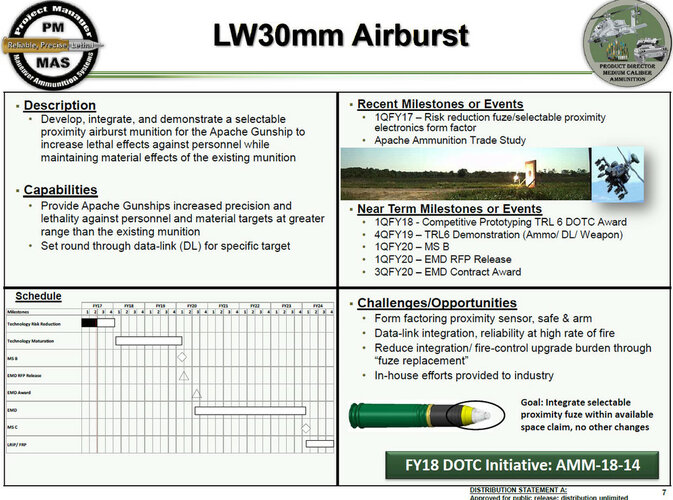
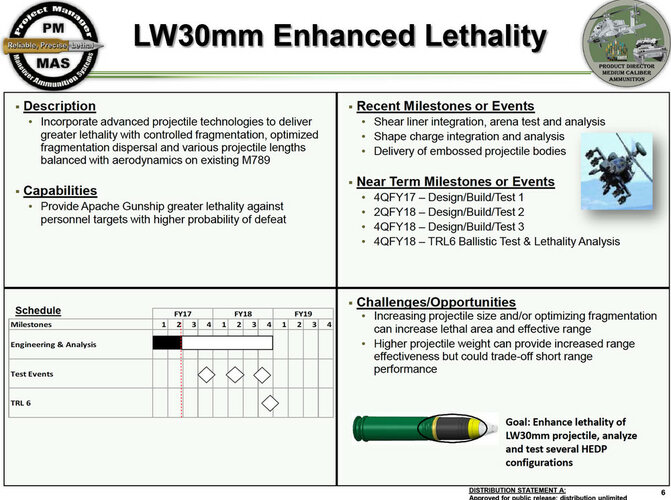
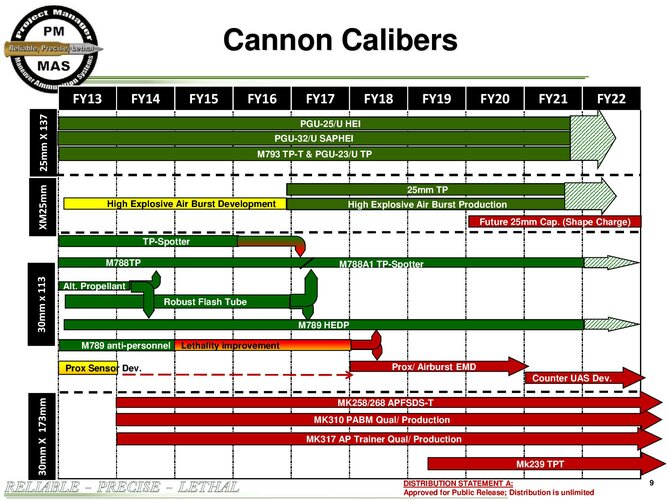
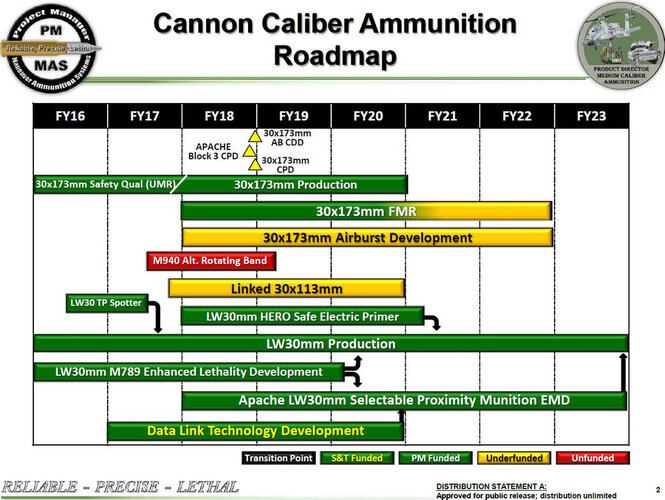
Northrop Grumman Armament Systems is expected, in early 2020, to conduct the first demonstration firings to the US Army of an all-up Programmable Light Weight 30 mm Proximity Sensing Ammunition (LW30 PROX) round.
A company-funded development, drawing on legacy Orbital ATK sensor fuzed weapons technologies, the LW30 PROX is a 30 × 113 mm radio frequency (RF) proximity fuzed, high explosive/fragmentation round designed for the M230 and M230LF (XM914) Bushmaster chain guns. Weighing 350 g, including a 245 g projectile, the LW30 PROX features a PA520 electric primer, a Northrop Grumman-developed programmable proximity sensor, and double base propellant delivering a muzzle velocity of 1,105 m/s.
Janes | Latest defence and security news
Janes | The latest defence and security news from Janes - the trusted source for defence intelligence
www.janes.com
Attention - muzzle velocity M789 HEDP ≈ 805 m/s, weight: 343 g, projectile mass: 234 g
300 extra m/s but how, long barrel? new propellant and chamber?
legacy M230 was problems with explosions of the barrel!
Last edited:
- Joined
- 18 October 2006
- Messages
- 4,211
- Reaction score
- 4,921
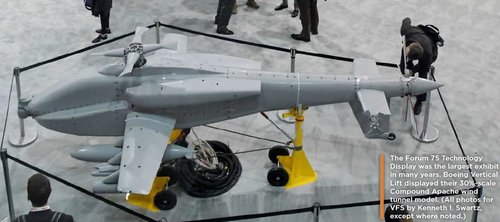
A couple more pictures of the compound AH-64. It is not surprising that this effort is on a slow burn as it is most likely being done with internal funds. I suspect that it will continue at this level until the Army shows interest. With the Army openly stating that the Apache will be around for several decades, while trying to accelerate high speed, longer ranged rotorcraft development, this is not a surprising effort to me.
Attachments
Last edited:
Colonial-Marine
UAVs are now friend, drones are the real enemy.
- Joined
- 5 October 2009
- Messages
- 1,475
- Reaction score
- 1,330
I am a bit skeptical of that large increase in muzzle velocity that LW30 airburst ammunition is said to provide. If there was some major advance in propellant wouldn't we have heard more about it and wouldn't they be applying to many other calibers?
- Joined
- 16 April 2008
- Messages
- 9,611
- Reaction score
- 14,517
I am a bit skeptical of that large increase in muzzle velocity that LW30 airburst ammunition is said to provide. If there was some major advance in propellant wouldn't we have heard more about it and wouldn't they be applying to many other calibers?
Yeah, there is definitely something odd here. I suspect it's actually a typo, that someone in marketing accidentally pulled the MV of a 30x173 round and used it on the brochure for LW30 Prox.
- Joined
- 21 April 2009
- Messages
- 13,760
- Reaction score
- 7,702

Can an Israeli missile give US Army aviation an advantage in future warfare?
A Spike NLOS missile was fired from an Apache attack helicopter at Yuma Proving Ground, Arizona, as part of an experiment that will help the Army shape a requirement for a long-range precision munition for its aircraft that can penetrate enemy territory.
- Joined
- 18 May 2019
- Messages
- 640
- Reaction score
- 1,673
Boeing was awarded a $33,581,477 contract for engineering design activities for integrating the T901 engine into the AH-64E Apache helicopter. Work will be performed in Mesa, Arizona, with an estimated completion date of Feb. 28, 2022.

 blog.executivebiz.com
blog.executivebiz.com
AH-64E with the T700-GE-701D
maximum combat take-off weight = 9190 kg
contingency power T700-GE-701D = 2000 hp for 2.5 minutes
power-to-weight 4000/9190=0.435 hp/kg
for the AH-64E with the T901
maximum take-off weight = ?
contingency power T901 = 3000 hp

Boeing Lands Army Contract for AH-64E Apache Helicopter Engine Integration
Boeing has won a 30-month, $33.5M cost-plus-fixed-fee contact from the U.S. Army to install turbine engines on AH-64E Apache helicopters.
AH-64E with the T700-GE-701D
maximum combat take-off weight = 9190 kg
contingency power T700-GE-701D = 2000 hp for 2.5 minutes
power-to-weight 4000/9190=0.435 hp/kg
for the AH-64E with the T901
maximum take-off weight = ?
contingency power T901 = 3000 hp
Last edited:
jsport
what do you know about surfing Major? you're from-
- Joined
- 27 July 2011
- Messages
- 7,736
- Reaction score
- 5,755
Spike NLOS continues to be looked at, has been for awhile but it is too slow to defeat APS and accomplish SEAD or counter air. Off the shelf doesn't seem to fit the bill. Classic procurement death valley...want a real capability you gotta pay for it to be developed. ...or in this case it MLMS and SPARK were started but not completed. Real requirements not fulfilled due to human foibles.
Can an Israeli missile give US Army aviation an advantage in future warfare?
A Spike NLOS missile was fired from an Apache attack helicopter at Yuma Proving Ground, Arizona, as part of an experiment that will help the Army shape a requirement for a long-range precision munition for its aircraft that can penetrate enemy territory.www.defensenews.com
- Joined
- 18 October 2006
- Messages
- 4,211
- Reaction score
- 4,921
I do agree that the missile is slow, but then AGM-114 is no dragster either. Not all of its targets are APS equipped. Bottom-line: Spike NLOS is in use and has far better reach than anything currently used on the AH-64. Standing off well beyond the range of the tactical ADA making things go away in front of the ground forces. It is what the aircraft was designed to do. It has done so for some time now. Given that night courts are now in vogue with the US DoD, it is hard to see funding for a new tactical missile in the US Army funding portfolio.
Similar threads
-
AAH Competition (AH-64 rivals)
- Started by overscan (PaulMM)
- Replies: 8
-
Vought V-529 & V-531 Twin engined Corsair II projects
- Started by Deino
- Replies: 22
-
-
-



